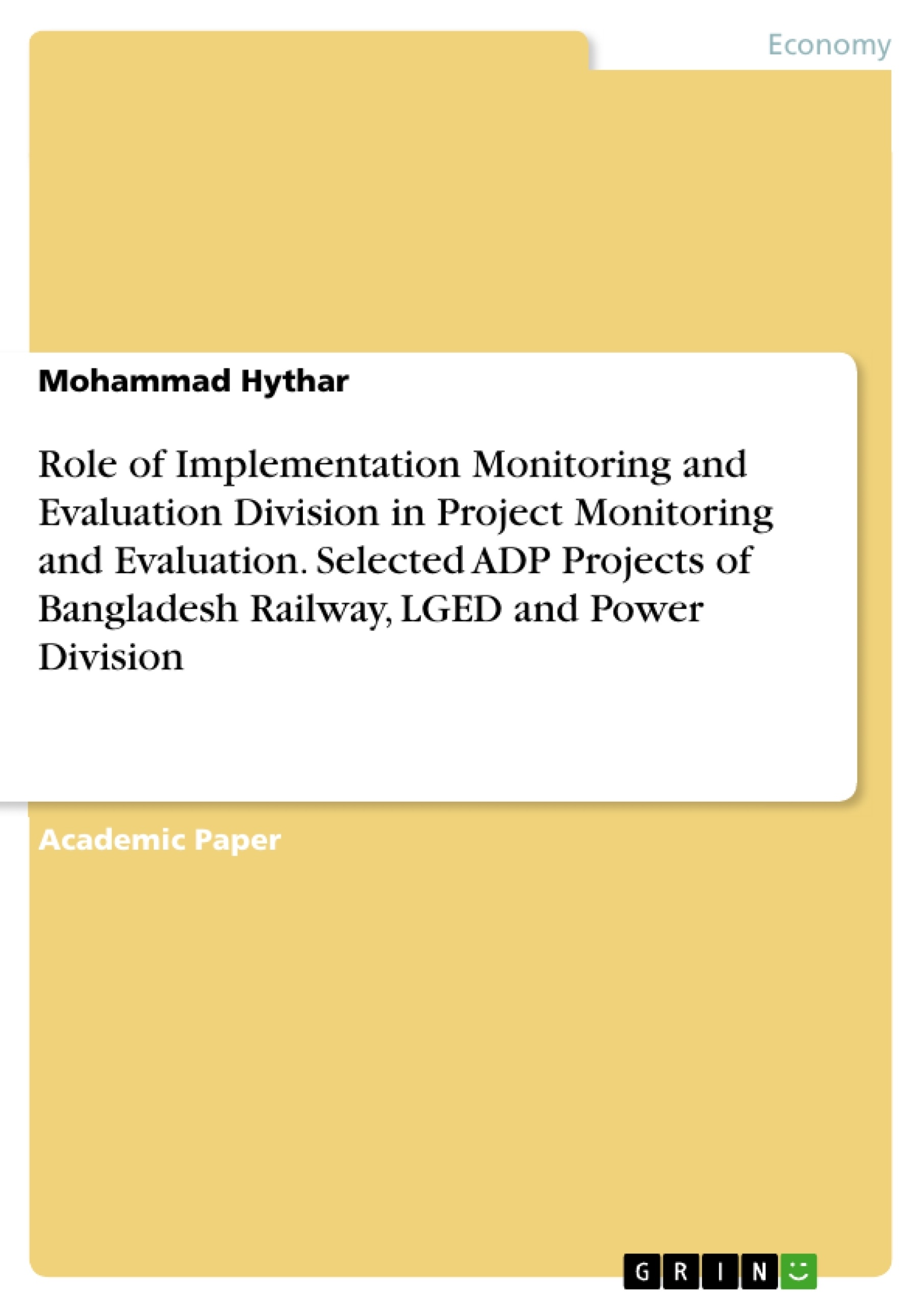Monitoring and Evaluation (M&E) are key drivers to make progress in public investment activities. At the national, sector, and subnational levels, M&E can give unique information regarding the performance of government policies, programs, and projects. It can tell us what works and what don’t, as well as why.
M&E also gives data on a government's performance, as well as the performance of specific ministries and agencies, as well as managers and their workforce. Highlighting examples of good practice and poor practice can help improve performance. With a focus on government performance, a number of governments have established formal systems for monitoring and assessing their performance on a regular, scheduled, and systematic basis, with the goal of improving it. In light of the above scenario, development partners in Bangladesh also wanted to ensure proper and judicious expenditure in development projects to meet the desired output. Because development partners have been financing a large amount of money in development projects in the country.
This was one of the driving forces behind the establishment of IMED (Implementation Monitoring and Evaluation Division) in Bangladesh. The staff of IMED along with outsourced firms employed by IMED, conduct monitoring and evaluation tasks for ADP projects. Different development plans in Bangladesh have given special importance to reform the present M&E system of IMED and to transform it into a result-based M&E management being equipped with IT for ensuring efficient and transparent services. Henceforth roles and capacity of IMED and its relevant agencies in contributing projects’ performance should be measured to find out any gap existing in the activities of IMED. The research was developed with applying mixed approach. The interviewees are mainly staff of IMED, while the respondents (N=41) are the employees of 16 ADP projects of Bangladesh Railway,LGED and Power Division, and of two evaluation units of LGED (Local Government Engineering Division) and DOICT (Directorate of Information and Communication Technology). Simon Priest’s model on process evaluation and outcome evaluation of program were used to validate the analytical framework of the research. In most cases both sides (interviewees and respondents) opinions were compared to cross check each other’s views.
Inhaltsverzeichnis (Table of Contents)
- Introduction
- Conceptual Framework
- Project Monitoring and Evaluation
- Role of IMED in M&E System of Bangladesh
- Methodology
- Research Design
- Data Collection Techniques
- Data Analysis Methods
- Results and Discussion
- Process Evaluation
- Outcome Evaluation
- Challenges Faced by IMED in Monitoring and Evaluation
- Findings
- Recommendations
- Conclusion
- References
- Appendices
Zielsetzung und Themenschwerpunkte (Objectives and Key Themes)
This research delves into the Implementation Monitoring and Evaluation Division (IMED) in Bangladesh, specifically examining its role in monitoring and evaluating selected ADP projects undertaken by Bangladesh Railway, LGED (Local Government Engineering Division), and the Power Division. The study aims to understand how IMED contributes to project performance and identifies any gaps in its activities.
- The importance of monitoring and evaluation (M&E) for effective public investment.
- The role and responsibilities of IMED in the M&E system of Bangladesh.
- The process and outcome evaluations of ADP projects, focusing on the effectiveness of IMED's activities.
- The challenges faced by IMED in carrying out its monitoring and evaluation responsibilities.
- Recommendations for enhancing the effectiveness and efficiency of IMED in project monitoring and evaluation.
Zusammenfassung der Kapitel (Chapter Summaries)
- Introduction: This chapter sets the context for the research, highlighting the significance of M&E in public investment and introducing the specific focus on IMED's role in Bangladesh. It outlines the research objectives and the methodology employed.
- Conceptual Framework: This chapter delves into the conceptual framework underpinning the research. It examines the theoretical aspects of project M&E and the functions and significance of IMED within the context of Bangladesh's development landscape.
- Methodology: This chapter outlines the research design, data collection techniques, and data analysis methods used in the study. It provides a detailed explanation of how the research was conducted.
- Results and Discussion: This chapter presents the findings of the study, analyzing both the process evaluation and outcome evaluation of the selected ADP projects. It discusses the challenges encountered by IMED in fulfilling its responsibilities.
- Findings: This chapter summarizes the key findings of the research, providing a concise overview of the key insights derived from the study.
- Recommendations: This chapter presents recommendations based on the research findings. It suggests ways to improve the effectiveness and efficiency of IMED in project monitoring and evaluation.
Schlüsselwörter (Keywords)
This research focuses on key terms and concepts including: Implementation Monitoring and Evaluation Division (IMED), Monitoring and Evaluation (M&E), ADP projects, Bangladesh Railway, LGED, Power Division, process evaluation, outcome evaluation, project performance, development partners, public investment, and challenges in M&E.
- Quote paper
- Mohammad Hythar (Author), 2021, Role of Implementation Monitoring and Evaluation Division in Project Monitoring and Evaluation. Selected ADP Projects of Bangladesh Railway, LGED and Power Division, Munich, GRIN Verlag, https://www.grin.com/document/1400404



